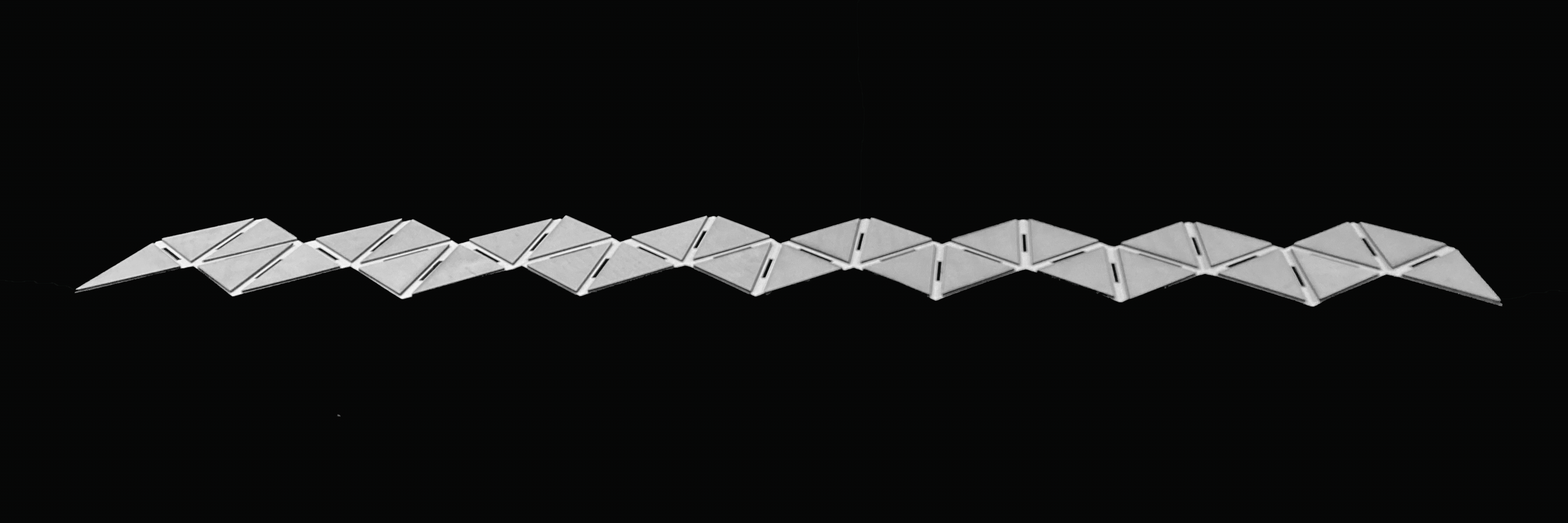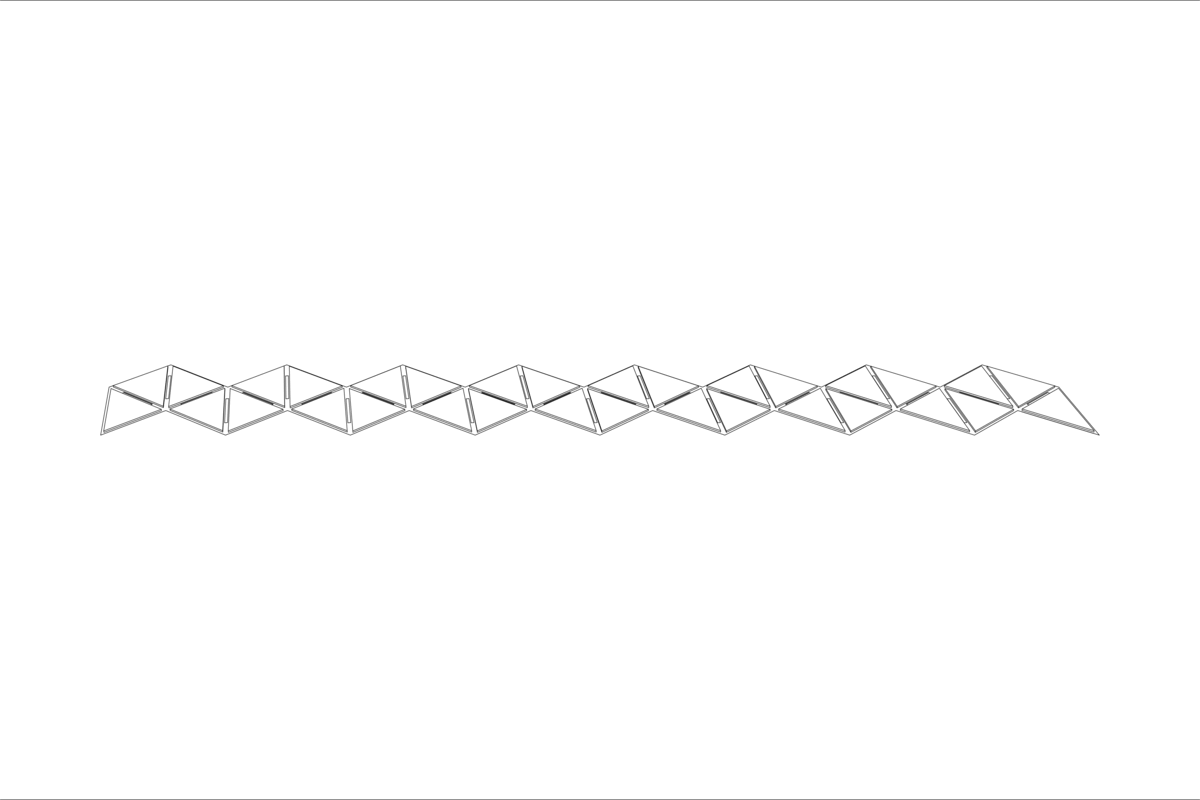Rice Architecture
F_X01
FOLDING MODEL / EXPERIMENT TWO
Valeria Aguirre
John Curylo
David Wu
Amber Wang
The formal logic established by our previous models drove our initial process: taking a simple form and creating complexity through a series of rudimentary operations. We began by taking one of our failed Membrane Model iterations and investigating how it collapsed. Because of certain breaks and creases within the material, we noticed we could implement these same moves in our folding model. By concentrating multiple points within this model, we were able to make the structure stand on its own. As we continued developing out model, we chose to use flexible chipboard instead of fabric dipped in cement. By taking a simple unit, in our case the triangle, and repeating it along a specific sequence, we developed a form that seemed extremely simple when unraveled but became more complex as we folded and intersected units. For the final model, we chose specific points based on the geometric properties of our units to insert and intersect vertices. The transformations we utilized converted our model from a two-dimensional surface to a three-dimensional and volumetric object.
PHYSICAL MODEL







DIGITAL MODEL




















